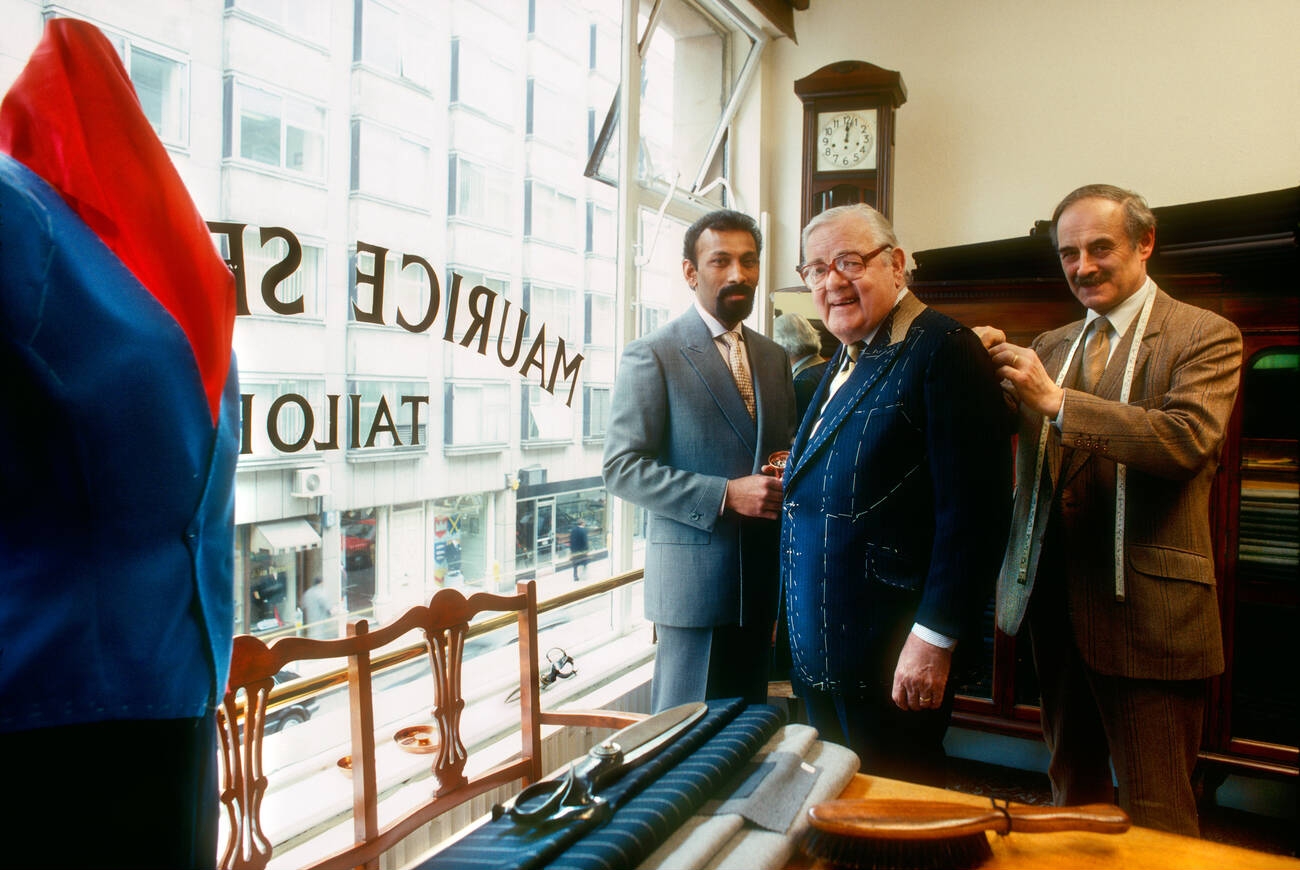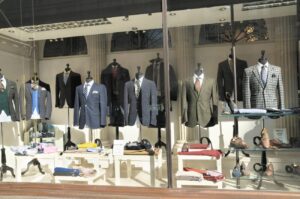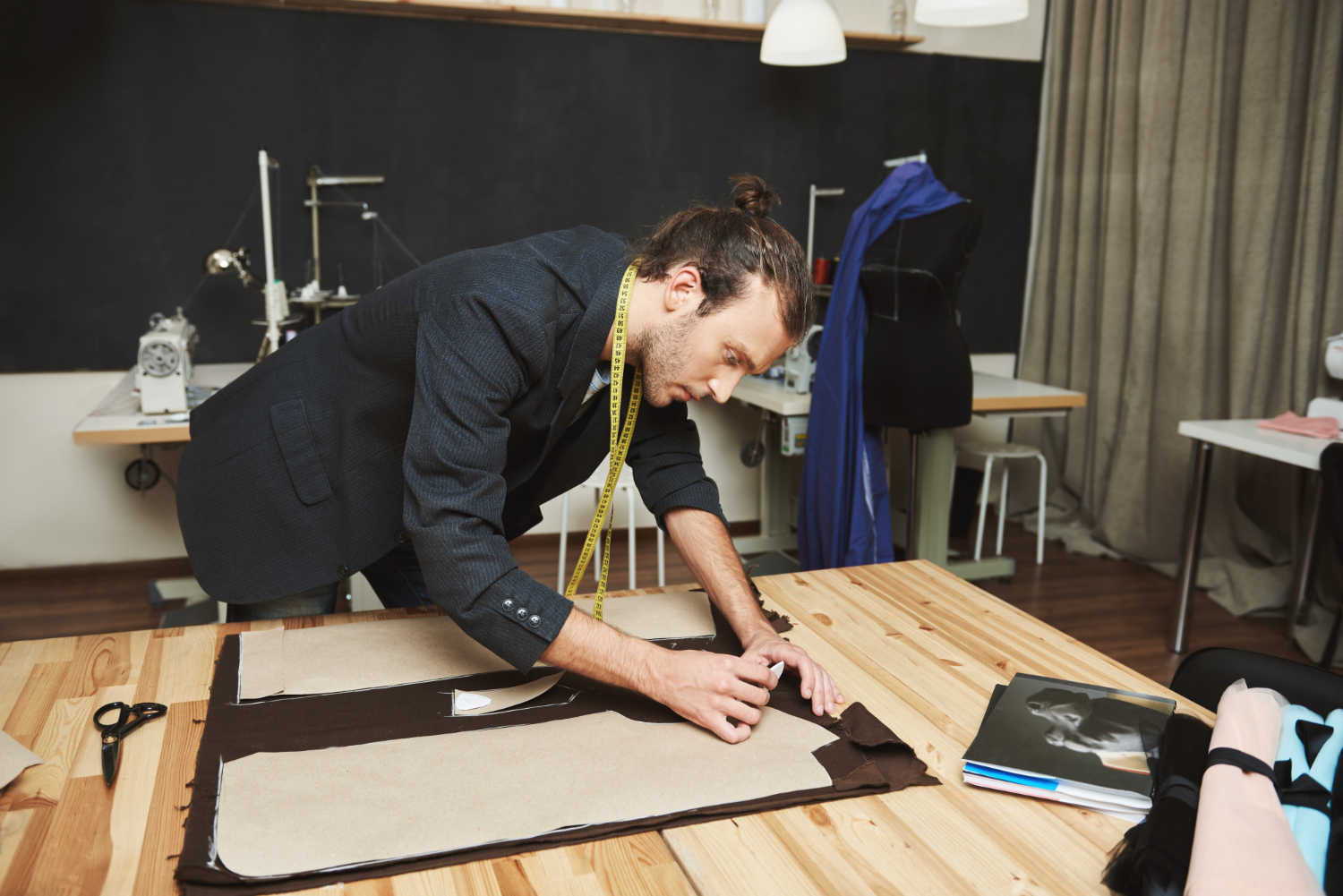Tailoring in Dubai is more than a craft—it’s an art form that weaves together tradition, innovation, and cultural diversity to create garments that define elegance and individuality. In a nation known for its luxurious lifestyle, vibrant business environment, and multicultural population, a well-tailored suits and tailoring are symbols of sophistication, whether for a corporate boardroom, a wedding, or a cultural celebration.
The dubai suits and tailoring scene thrives on its ability to blend global influences with local traditions. In cities like Dubai and Abu Dhabi, tailors cater to a diverse clientele, from Emirati locals seeking traditional attire to expatriates and tourists desiring Western-style suits or culturally inspired garments. This guide will explore every facet of tailoring, from the meticulous process of crafting a bespoke suit to the latest trends shaping the industry in 2025. Whether you’re dressing for a high-stakes business meeting, a wedding, or a cultural event, understanding the art of tailoring will elevate your style and confidence. Stylish Handy Tailors, a trusted name in the Dubai fashion scene, invites you to embark on this journey to discover how tailoring can transform not just your wardrobe but your presence in any setting.
The History of Tailoring in the UAE
Tailoring in the UAE has a rich history that reflects the nation’s evolution from a trading hub to a global metropolis. Long before the skyscrapers of Dubai and Abu Dhabi dominated the skyline, the UAE’s Bedouin communities relied on skilled artisans to create garments suited to the desert climate. These early tailors used lightweight fabrics, such as cotton and linen, to craft traditional attire, including the kandura (a long, white robe for men) and the abaya (a flowing black cloak for women), which were designed for breathability and modesty. These garments were often hand-stitched with intricate embroidery, showcasing the tailor’s skill and the wearer’s status. The craft was passed down through generations, with families of tailors establishing reputations for their precision and artistry.
As the UAE opened to global trade in the 20th century, tailoring began to incorporate Western influences, particularly from British and Italian traditions. The introduction of Savile Row-inspired techniques brought structured suits to the region, catering to the growing expatriate population and Emirati elites. Tailors adapted these methods to suit the UAE’s climate, using lighter wools and innovative cuts to ensure comfort in the heat. The rise of Dubai as a commercial hub in the late 20th century spurred demand for bespoke suits, as business professionals sought garments that exuded authority and style. Simultaneously, the UAE’s multicultural population—comprising South Asian, European, and Middle Eastern communities—introduced diverse tailoring needs, from Indian sherwanis to Western tuxedos.
Today, the UAE’s tailoring industry is a fusion of heritage and modernity. Artisans at Stylish Handy Tailors honor this legacy by blending traditional techniques with contemporary designs, ensuring that every garment reflects the UAE’s unique cultural tapestry. From hand-stitched kanduras to bespoke three-piece suits, the evolution of tailoring in the UAE mirrors the nation’s journey from desert traditions to global prominence, making it a fascinating subject for anyone passionate about fashion and craftsmanship.
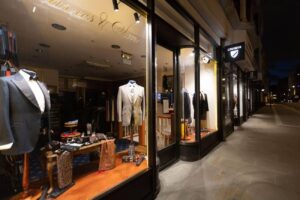
The Art of Tailoring: Step-by-Step Process
Crafting a suit is a meticulous process that transforms raw fabric into a masterpiece of fit and style. At its core, tailoring is about precision, patience, and personalization, with each step requiring a deep understanding of the client’s needs and the craft’s technical demands. The journey begins with a consultation, where the tailor and client discuss the garment’s purpose—be it a business suit, wedding tuxedo, or cultural attire. This stage involves exploring style preferences, such as single-breasted or double-breasted jackets, peak or notch lapels, and slim or classic fits. The tailor also considers the occasion, body type, and personal aesthetic, sketching designs or presenting fabric swatches to align with the client’s vision.
Next comes measurement, a critical step that sets bespoke tailoring apart. Tailors take dozens of measurements—chest, shoulders, waist, arm length, and posture details—to ensure a flawless fit. They note subtle nuances, like a slight shoulder slope or arm asymmetry, to create a pattern unique to the client. This process, often conducted with a measuring tape and tailor’s square, requires an eye for detail and an understanding of human anatomy. At Stylish Handy Tailors, this stage is treated as an art, ensuring every measurement captures the client’s unique silhouette.
Fabric selection follows, where clients choose from a range of materials suited to the UAE’s climate and their style goals. Lightweight wool, cotton, and linen are popular for their breathability, while silk and cashmere add luxury for formal occasions. Tailors guide clients on texture, weight, and weave, explaining how a twill weave offers durability or how a plain weave enhances breathability. The choice of lining—silk for elegance or cotton for comfort—also plays a role, as does the selection of buttons, thread colors, and stitching patterns.
The pattern-making and cutting phase is where the tailor’s expertise shines. Using the client’s measurements, the tailor drafts a paper pattern, a blueprint for the suit. This pattern is used to cut the fabric with precision, ensuring minimal waste and perfect alignment of patterns like checks or stripes. Hand-cutting, often done with tailor’s shears, allows for adjustments that account for fabric stretch or client-specific needs, such as extra room for movement.
Assembly and stitching involve constructing the garment, often by hand for bespoke suits. Techniques like hand-stitched lapels and buttonholes add durability and a refined finish, with tailors spending hours perfecting each seam. The canvas—a layer of material between the fabric and lining—gives the suit structure, with full-canvas construction being the gold standard for flexibility and longevity. Machine stitching may be used for made-to-measure suits to balance quality and efficiency, but bespoke tailoring prioritizes handwork for unparalleled detail.
Fittings are integral, often requiring multiple sessions to refine the fit. During the first fitting, the tailor assesses the basted garment (a temporary assembly) to adjust for posture, comfort, and style. Subsequent fittings fine-tune details like sleeve length or trouser break, ensuring the suit drapes naturally. The final fitting confirms the garment’s perfection, with the tailor making minor tweaks to achieve a second-skin fit.
Delivery marks the culmination, where the client receives their suit, often accompanied by care instructions to maintain its longevity. Some tailors offer express delivery for urgent needs, using pre-drafted patterns or expedited stitching, but the standard process takes weeks to ensure quality. Alterations may follow if the client’s body changes or preferences evolve, ensuring the garment remains a perfect fit.
Bespoke vs. Made-to-Measure vs. Off-the-Rack
Understanding the differences between bespoke, made-to-measure, and off-the-rack suits is crucial for anyone seeking the perfect garment in the UAE. Each option offers distinct advantages, catering to different needs, preferences, and time constraints.
Bespoke tailoring is the pinnacle of personalization. Every aspect of the suit is crafted from scratch, beginning with a unique pattern tailored to the client’s measurements. This process involves multiple fittings—typically three to five—to ensure a flawless fit, with hand-stitched details such as lapels, buttonholes, and seams that add durability and elegance. Bespoke suits offer unlimited customization, allowing you to choose the exact lapel width, select unique linings, or opt for monogramming. The process is time-intensive, often taking weeks, but the result is a garment that fits like a second skin, ideal for those who value individuality and craftsmanship. In the UAE, bespoke tailoring is popular for weddings and high-profile events, where a standout appearance is essential.
Made-to-measure offers a balance between customization and efficiency. It starts with a pre-existing pattern, adjusted to the client’s measurements. Clients can choose fabrics, linings, and details like buttons or pocket styles, but the customization is less extensive than bespoke. Typically, one or two fittings suffice, and machine stitching is often used to streamline production. Made-to-measure suits are ideal for those seeking a personalized fit without the time commitment of bespoke, making them popular among UAE professionals who need sharp business attire quickly. The process leverages technology, such as digital pattern adjustments, to achieve a near-bespoke fit with faster delivery.
Off-the-rack suits are pre-made garments available in standard sizes, found in retail stores across Dubai and Abu Dhabi. These suits offer limited customization, though alterations (e.g., hemming trousers or adjusting sleeves) can improve the fit. They are the most accessible and quickest option, ideal for those with standard body types or urgent needs, such as tourists attending events in the UAE. However, off-the-rack suits may lack the precision and individuality of bespoke or made-to-measure options, and alterations can only do so much to perfect the fit. The quality varies, with some retailers offering high-end off-the-rack suits made from premium fabrics.
Each option has its place in the UAE’s tailoring landscape. Bespoke suits shine for their craftsmanship, made-to-measure suits offer a practical middle ground, and off-the-rack suits provide convenience. Stylish Handy Tailors recommends considering your occasion, timeline, and style goals when choosing, ensuring your suit reflects your unique needs and the UAE’s dynamic fashion culture.
Top Tailors in the UAE: A Comprehensive Comparison
The UAE is home to a vibrant tailoring community, with artisans in Dubai, Abu Dhabi, and beyond offering exceptional bespoke and made-to-measure services. This section explores the characteristics of top tailors, focusing on their expertise, service offerings, and unique approaches to suit-making, without naming specific businesses. Instead, it highlights the qualities that define excellence in UAE tailoring, drawing inspiration from the craftsmanship seen at Stylish Handy Tailors.
Top tailors in the UAE are distinguished by their expertise and training. Many have roots in global tailoring hubs like Savile Row or Italy, bringing techniques such as hand-stitched canvassing and precise pattern drafting to the UAE. Others come from generational tailoring families, passing down skills honed over decades. These artisans excel in understanding client needs, whether crafting a sharp business suit or a flowing wedding tuxedo, and often specialize in both Western and cultural attire, such as kanduras or sherwanis.
Service offerings vary widely. Some tailors focus exclusively on bespoke suits, offering unlimited customization and multiple fittings for a perfect fit. Others provide made-to-measure options, using adjustable patterns to deliver quality suits faster. Many offer additional services, such as home consultations, where tailors visit clients to take measurements and discuss designs, ideal for busy professionals or tourists. Alteration services are also common, with some tailors providing same-day adjustments for minor fixes like hemming or sleeve shortening. Accessories—ties, cufflinks, and pocket squares—are often part of the package, allowing clients to complete their look with cohesive details.
Specializations set tailors apart. Some excel in wedding attire, crafting tuxedos and entourage packages with intricate details like embroidered linings or custom buttons. Others focus on corporate wear, creating suits that balance professionalism and comfort for the UAE’s business environment. Cultural tailoring, including traditional Emirati garments or South Asian sherwanis, is a niche for tailors catering to the UAE’s diverse population. Some offer express services, delivering suits in as little as a week for time-sensitive clients, while others emphasize sustainability, using eco-friendly fabrics or zero-waste production methods.
Customer experience is a hallmark of top tailors. They prioritize personalized consultations, often using lookbooks or digital tools to visualize designs. Virtual consultations via video calls have become popular, allowing clients to discuss preferences remotely. Many tailors maintain client profiles, storing measurements for future orders, which streamlines repeat purchases. The fitting process is meticulous, with tailors adjusting every detail to ensure comfort and style, from the trouser break to the jacket’s shoulder fit.
This section avoids naming specific tailors but draws on the qualities that make Stylish Handy Tailors a leader in the field, offering readers a framework to evaluate tailors based on expertise, services, and client focus. Whether in Dubai’s bustling DIFC or Abu Dhabi’s cultural hubs, the UAE’s top tailors share a commitment to craftsmanship that elevates the art of suit-making.
Fabric Choices for UAE’s Climate and Style
Selecting the right fabric is a cornerstone of tailoring, especially in the UAE, where the hot, arid climate demands breathable materials that maintain elegance. The choice of fabric affects not only comfort but also the suit’s appearance, durability, and suitability for various occasions. Tailors in the UAE, including those at Stylish Handy Tailors, guide clients through a vast array of options, ensuring the fabric aligns with the client’s style and the region’s environmental challenges.
Lightweight wool is a popular choice for UAE suits due to its versatility and breathability. Merino wool, known for its fine fibers, offers a soft, lightweight feel that drapes beautifully while wicking moisture, making it ideal for summer. Tropical wool, with its open weave, enhances airflow, keeping the wearer cool during outdoor events. Wool’s natural elasticity ensures the suit retains its shape, even after long wear, and its durability makes it a staple for business and formal attire.
Cotton is another excellent option, prized for its breathability and affordability. It’s ideal for casual suits or summer blazers, offering a crisp, clean look. However, cotton wrinkles more easily than wool, requiring careful maintenance. Tailors often recommend cotton for semi-formal occasions, such as brunches or daytime events, where a relaxed yet polished appearance is desired.
Linen is synonymous with summer tailoring in the UAE. Its open weave allows maximum airflow, making it perfect for the hottest months. Linen suits exude a laid-back elegance, with their natural texture and slight wrinkling adding character. Tailors may blend linen with silk or cotton to reduce creasing while preserving its lightweight appeal, ideal for beach weddings or outdoor gatherings.
Silk adds a luxurious touch, often used for linings or blended with wool for formal suits. Its smooth, reflective surface enhances the suit’s sheen, making it ideal for evening events or weddings. However, silk is less breathable, so tailors recommend it for cooler seasons or air-conditioned venues. Silk’s delicate nature requires expert handling during stitching to prevent damage.
Cashmere is reserved for cooler months or high-end formalwear. Its softness and warmth make it a premium choice for winter suits or overcoats, offering unmatched comfort. Tailors often use cashmere blends to balance luxury with practicality, ensuring the suit remains lightweight yet insulating.
Sustainable fabrics are gaining traction in the UAE, reflecting global trends toward eco-conscious fashion. Organic cotton, grown without pesticides, offers an environmentally friendly alternative to standard cotton. Recycled wool, made from repurposed fibers, reduces waste while maintaining quality. Some tailors use plant-based fabrics like bamboo or hemp, which are biodegradable and breathable, aligning with the UAE’s growing sustainability initiatives.
When selecting fabrics, tailors consider the weave and weight. Twill weaves, with their diagonal pattern, offer durability and a subtle texture, ideal for business suits. Plain weaves are lightweight and breathable, perfect for summer. Heavier fabrics (12-14 oz) suit cooler months, while lighter fabrics (8-10 oz) are better for the UAE’s heat. Color and pattern also play a role, with neutral tones like navy, charcoal, and beige dominating business wear, while bold patterns like checks or pinstripes add flair for social events. Tailors at Stylish Handy Tailors guide clients to choose fabrics that balance climate, occasion, and personal style, ensuring a suit that looks and feels exceptional.
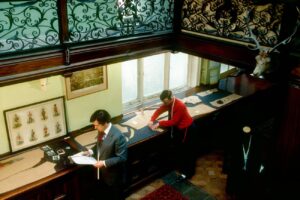
Tailoring for Special Occasions
Tailoring for special occasions in the UAE requires a deep understanding of the event’s cultural and aesthetic demands, whether it’s a wedding, a corporate gala, or a cultural celebration. Each occasion calls for specific styles, fabrics, and details, and tailors in the UAE excel at creating garments that make a lasting impression.
Weddings are a cornerstone of UAE tailoring, with bespoke tuxedos and suits designed to reflect the grandeur of the occasion. Grooms often opt for classic black or midnight blue tuxedos with satin lapels, tailored to a slim fit for a modern silhouette. Double-breasted suits in ivory or grey are popular for daytime weddings, offering elegance and versatility. Tailors enhance wedding suits with details like embroidered linings, custom buttons, or monogramming, ensuring the groom stands out. For entourage members, tailors create cohesive looks, such as matching vests or ties, to unify the wedding party. Fabrics like lightweight wool or silk blends are favored for their luxurious drape, with breathable linings to suit the UAE’s climate.
Business events demand suits that convey authority and professionalism. Single-breasted suits in navy or charcoal, with notch lapels and a tailored fit, are staples for corporate settings. Tailors focus on subtle details, such as structured shoulders or double vents, to enhance the suit’s silhouette. For high-stakes events like conferences or galas, three-piece suits with vests add sophistication. Fabrics like Merino wool or wool-cotton blends ensure comfort during long hours, while neutral colors maintain versatility. Tailors may incorporate functional elements, like extra pockets for business cards, to meet practical needs.
Cultural celebrations in the UAE reflect the nation’s diversity, with tailors crafting traditional and fusion garments. Emirati kanduras, tailored from lightweight cotton or linen, are designed for comfort and elegance, often with subtle embroidery around the collar or cuffs. South Asian clients may request sherwanis or Jodhpuris, which combine intricate embroidery with structured cuts for weddings or festivals. Tailors use rich fabrics like silk or brocade for these garments, ensuring they reflect cultural heritage while appealing to modern tastes. For women, tailored abayas or saree blouses offer a blend of tradition and personalization, with hand-stitched embellishments adding uniqueness.
Accessories complete the look for special occasions. Tailors offer bespoke ties, bow ties, and pocket squares in silk or cotton, matched to the suit’s fabric and color. Cufflinks, tie clips, and lapel pins add a personalized touch, while custom belts or suspenders ensure a cohesive ensemble. For cultural attire, accessories like agal (headband for kanduras) or embroidered dupattas enhance authenticity. Tailors at Stylish Handy Tailors emphasize the importance of aligning accessories with the garment’s purpose, ensuring every detail enhances the overall look.
Crafting suits for special occasions requires a balance of creativity and precision, with tailors adapting to the UAE’s diverse cultural and professional landscape. Whether for a wedding or a corporate event, a tailored garment transforms the wearer’s presence, making every moment memorable.
Women’s Tailoring in the UAE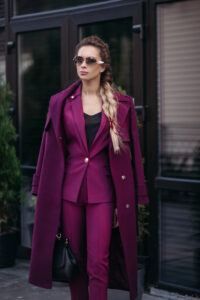
Women’s tailoring in the UAE is a growing field, reflecting the region’s evolving fashion landscape and the demand for personalized, stylish attire. While men’s suits dominate the tailoring scene, women’s bespoke clothing—from tailored suits to cultural dresses—offers endless possibilities for individuality and elegance, catering to the UAE’s diverse female population.
Bespoke suits for women are gaining popularity, particularly among professionals in Dubai and Abu Dhabi’s corporate sectors. These suits feature tailored jackets with fitted waists, structured shoulders, and trousers or skirts designed to flatter the wearer’s silhouette. Fabrics like lightweight wool or cotton blends ensure comfort in the UAE’s heat, while bold colors like emerald green or soft pastels add a feminine touch. Tailors focus on details like double-breasted fronts, asymmetrical lapels, or custom linings to create a standout look. Women’s suits are versatile, suitable for boardrooms, networking events, or formal dinners, with tailored vests or blouses adding variety.
Cultural attire is a significant aspect of women’s tailoring in the UAE. Abayas, traditionally black and flowing, are customized with bespoke embroidery, lace, or beadwork to reflect personal style while maintaining modesty. Tailors use lightweight fabrics like chiffon or crepe to ensure breathability, with intricate patterns around the cuffs or hem adding elegance. Saree blouses, popular among South Asian women, are tailored to complement the saree’s drape, with fitted cuts and embellishments like zari work or sequins. For weddings, tailors create lehenga cholis or anarkali suits, blending traditional craftsmanship with modern aesthetics, using silk or brocade for a luxurious finish.
Dresses and gowns are another focus, with tailors crafting bespoke evening gowns for galas, weddings, or cultural events. These garments range from sleek, minimalist designs to elaborate, floor-length creations with hand-stitched beadwork or embroidery. Fabrics like silk, satin, or tulle are chosen for their drape and sheen, with tailors incorporating details like corset-style bodices or asymmetrical hemlines to suit the client’s vision. Fittings are crucial, ensuring the gown enhances the wearer’s figure while allowing ease of movement.
Alterations play a significant role in women’s tailoring, as many clients bring existing garments for customization. Tailors adjust dresses, abayas, or saree blouses to improve fit, update styles, or add embellishments. For example, an outdated gown can be transformed with a new neckline or additional embroidery, extending its lifespan. Tailors also offer resizing services to accommodate body changes, ensuring garments remain wearable and stylish.
Women’s tailoring in the UAE reflects a blend of global trends and cultural heritage, with artisans at Stylish Handy Tailors leading the way in creating garments that empower women to express their individuality. Whether for professional or cultural occasions, bespoke women’s clothing offers a perfect balance of style, comfort, and tradition.
Technology and Innovation in Tailoring
Technology is revolutionizing tailoring in the UAE, enhancing precision, efficiency, and client experience while preserving the craft’s artistry. From digital tools to advanced machinery, these innovations are transforming the way tailors create suits, making the process more accessible and personalized.
Digital consultations have become a game-changer, allowing clients to discuss designs remotely via video calls. Tailors use virtual platforms to present fabric swatches, sketch designs, or showcase lookbooks, enabling clients to visualize their suit before measurements are taken. This is particularly valuable for busy professionals or international clients, who can connect with UAE tailors from anywhere in the world. Some tailors store client measurements in digital profiles, streamlining future orders and ensuring consistency.
3D body scanning is transforming the measurement process. Using laser or infrared technology, scanners capture hundreds of data points to create a precise 3D model of the client’s body. This eliminates human error in manual measurements and accounts for nuances like posture or asymmetry. The resulting data is used to draft patterns digitally, ensuring a perfect fit. While not all tailors utilize 3D scanning, those that do offer a futuristic approach to bespoke tailoring, particularly for clients with unique body types.
Computer-aided design (CAD) software enhances pattern-making and cutting. Tailors input measurements into CAD systems to generate digital patterns, which can be adjusted for fit or style preferences. These patterns guide automated cutting machines, ensuring precision and minimizing fabric waste. CAD also allows tailors to experiment with designs, such as testing different lapel shapes or pocket placements, before cutting the fabric.
Smart fabrics are an emerging trend that incorporates technology directly into the suit itself. Fabrics with moisture-wicking or temperature-regulating properties enhance comfort in the UAE’s heat, while stretch blends improve mobility without sacrificing structure. Some tailors experiment with fabrics embedded with nanotechnology, offering stain resistance or UV protection, ideal for outdoor events.
Customer relationship management (CRM) systems streamline the tailoring process, from booking consultations to tracking fittings and deliveries. These platforms store client preferences, measurements, and order histories, enabling tailors to offer personalized recommendations and faster service. For example, a client ordering a second suit can bypass initial measurements, as the CRM retrieves their profile instantly.
While technology enhances efficiency, the artistry of tailoring remains paramount. At Stylish Handy Tailors, technology is used to complement traditional craftsmanship, ensuring that every suit benefits from both innovation and human expertise. These advancements make tailoring more accessible, precise, and tailored to the modern client’s needs.

Cost of Tailoring in Dubai
The cost of tailoring in the UAE varies depending on factors like the type of garment, fabric choice, customization level, and the tailor’s expertise. While specific prices are not discussed here, understanding these factors helps clients anticipate expenses and make informed decisions when commissioning a suit.
Garment type significantly influences cost. Bespoke suits, requiring extensive handwork and multiple fittings, are the most labor-intensive, reflecting the tailor’s skill and time. Made-to-measure suits, using adjusted patterns and partial machine stitching, are less costly but still offer personalization. Alterations, such as hemming or resizing, are the least expensive, focusing on specific adjustments to existing garments. Complex garments like wedding tuxedos or embroidered cultural attire require additional craftsmanship, impacting the overall cost.
Fabric choice is a major determinant. Lightweight wool, such as Merino, is a premium option due to its quality and durability, while cotton or linen blends are more affordable but may require careful maintenance. Luxury fabrics like silk or cashmere, often used for formalwear, demand expert handling, increasing labor costs. Sustainable fabrics, such as organic cotton or recycled wool, may carry a premium due to their eco-friendly production processes.
Customization level affects the cost. Bespoke suits, with unlimited options like custom linings, monogramming, or hand-stitched buttonholes, require more time and skill than made-to-measure suits with limited choices. Details like contrast stitching, unique lapel shapes, or additional pockets add to the tailor’s workload, influencing the final cost. Accessories, such as bespoke ties or cufflinks, also contribute to expenses.
Tailor expertise plays a role, as artisans with decades of experience or training from global tailoring hubs command higher fees for their precision and reputation. Tailors offering additional services, like home consultations or express delivery, may factor these conveniences into their costs. The number of fittings—typically three to five for bespoke, one to two for made-to-measure—also impacts the overall expense, as each session requires time and resources.
Occasion and urgency can influence costs. Wedding suits or garments for high-profile events often involve intricate details, increasing labor. Express services, delivering suits in a week or less, require prioritized scheduling and resources, adding to the expense. Seasonal factors, such as peak wedding seasons, may also affect availability and costs.
Clients can manage costs by discussing their budget with their tailor during the consultation, ensuring the garment aligns with their financial and style goals. Tailors at Stylish Handy Tailors emphasize transparency, helping clients choose options that balance quality and affordability without compromising craftsmanship.
Sustainability and Ethical Tailoring
Sustainability is reshaping tailoring in the UAE, aligning with global trends toward eco-conscious fashion. Ethical tailoring focuses on environmentally friendly materials, waste reduction, and fair labor practices, appealing to clients who value sustainability alongside style.
Sustainable fabrics are at the forefront. Organic cotton, grown without harmful pesticides, reduces environmental impact while offering breathability for the UAE’s climate. Recycled wool, made from repurposed fibers, minimizes waste and maintains durability. Plant-based fabrics like bamboo or hemp are biodegradable and require less water to produce, making them ideal for eco-conscious suits. Tailors also explore upcycled fabrics, repurposing leftover materials into unique designs, such as patchwork jackets or linings.
Zero-waste production is a growing practice. Tailors optimize patterns to minimize fabric offcuts, using scraps for smaller items like pocket squares or buttons. Some employ digital cutting tools to enhance precision, reducing waste further. Made-to-order models, where garments are crafted only after client orders, eliminate excess inventory, ensuring every piece has a purpose.
Ethical labor practices are critical. Tailors prioritize fair wages and safe working conditions for artisans, fostering a sustainable industry. Some collaborate with local communities, training aspiring tailors to preserve the craft and support the UAE’s economy. Transparency is key, with tailors sharing details about their supply chain, from fabric sourcing to production, to build client trust.
Eco-friendly maintenance extends a suit’s lifespan. Tailors educate clients on proper care, such as spot cleaning to avoid excessive dry cleaning, which uses harsh chemicals. Reusable garment bags made from organic cotton protect suits during storage, reducing plastic waste. Alterations, such as resizing or repairing, allow clients to refresh existing garments instead of purchasing new ones.
The UAE’s push for sustainability, driven by initiatives like the UAE Vision 2021, encourages tailors to adopt green practices. By choosing sustainable fabrics and ethical methods, tailors contribute to a greener future while delivering high-quality garments. This aligns with the mission of Stylish Handy Tailors, where sustainability and craftsmanship go hand in hand, creating suits that are both stylish and responsible.

How to Choose the Right Tailor
Selecting the right tailor in the UAE is a critical decision that ensures your suit meets your style, fit, and occasion needs. With a wealth of talented artisans across Dubai, Abu Dhabi, and beyond, understanding key factors helps you find a tailor who delivers exceptional results.
Expertise and experience are paramount. Look for tailors with a strong background in bespoke or made-to-measure suits, ideally with training from renowned tailoring hubs or generational expertise. Experienced tailors understand the nuances of fit, fabric, and construction, ensuring your suit is crafted with precision. Ask about their specialization—whether business suits, wedding attire, or cultural garments—to ensure they align with your needs.
Service offerings vary, so consider what suits your lifestyle. Some tailors provide home consultations, bringing their expertise to your doorstep, ideal for busy professionals. Others offer virtual consultations, allowing you to discuss designs remotely. Check if they provide express services for urgent needs or store measurements for future orders. Alteration services are also crucial, as they ensure your suit can be adjusted over time.
Customization options reflect a tailor’s versatility. Bespoke tailors offer unlimited choices, from lapel styles to stitching patterns, while made-to-measure tailors provide a curated selection. Ask about fabric options, linings, and accessories like ties or cufflinks to ensure the tailor can create a cohesive look. For cultural attire, confirm their experience with garments like kanduras or sherwanis.
Client experience sets top tailors apart. During consultations, they should listen attentively, offer expert advice, and provide visual aids like lookbooks or sketches. Multiple fittings indicate a commitment to perfection, while clear communication about timelines and processes builds trust. Reading online reviews or seeking recommendations can reveal a tailor’s reputation for reliability and quality.
Location and accessibility matter, especially in the UAE’s sprawling cities. Tailors in central areas like Dubai’s DIFC or Abu Dhabi’s cultural districts are convenient, but those offering home visits or express delivery add flexibility. For tourists, tailors with fast turnaround times or international shipping are ideal.
Finally, ask questions during the consultation: What fabrics do they recommend for the UAE’s climate? How many fittings are included? Do they offer post-delivery alterations? These insights ensure the tailor meets your expectations. At Stylish Handy Tailors, the focus is on personalized service, guiding clients to find the perfect tailor for their unique needs.
Cultural Influences on UAE Tailoring
The UAE’s multicultural population shapes its tailoring industry, blending Emirati traditions with global influences to create a diverse array of garments. This fusion reflects the nation’s role as a cultural crossroads, where tailors craft attire that honors heritage while embracing modernity.
Emirati attire is a cornerstone of UAE tailoring. The kandura, a long, white robe for men, is tailored from lightweight cotton or linen for breathability, with subtle details like embroidered collars or cuffs adding elegance. The ghutra (headscarf) and agal (headband) are often customized to match, ensuring a cohesive look. For women, the abaya is a canvas for creativity, with tailors adding bespoke embroidery, lace, or beadwork to reflect personal style. These garments balance modesty with sophistication, tailored to fit perfectly while adhering to cultural norms.
South Asian influences are prominent, given the UAE’s large Indian and Pakistani communities. Sherwanis, long tunics with intricate embroidery, are popular for weddings, tailored from silk or brocade for a regal appearance. Jodhpuri suits, combining a bandhgala jacket with trousers, offer a structured yet ornate look, often customized with gold buttons or zari work. Saree blouses and lehenga cholis are tailored with precision, ensuring the fit complements the drape of the accompanying garment. Tailors use vibrant colors and heavy embellishments to reflect South Asian aesthetics.
Western influences dominate business and formalwear, with tailors crafting suits inspired by Savile Row or Italian traditions. Single-breasted suits in navy or charcoal, with slim fits and notch lapels, are tailored for corporate settings, while tuxedos with satin details suit galas. These suits incorporate UAE-specific adaptations, such as lighter fabrics or breathable linings, to suit the climate.
Other global influences include African dashikis, tailored with bold prints for cultural events, and East Asian-inspired garments like mandarin-collar jackets. Tailors adapt these styles to the UAE’s preferences, using breathable fabrics and modern cuts. For example, a dashiki may be tailored with a slimmer fit to align with contemporary trends.
This cultural diversity allows tailors to showcase versatility, creating garments that resonate with clients from varied backgrounds. Whether crafting a kandura or a sherwani, tailors in the UAE celebrate the nation’s multicultural identity, ensuring every garment tells a story.

Alterations and Repairs in Tailoring
Alterations and repairs are essential services in UAE tailoring, allowing clients to refresh existing garments, improve fit, or extend their lifespan. These services cater to a wide range of needs, from minor adjustments to complex reconstructions, ensuring every garment remains wearable and stylish.
Common alterations include hemming trousers or skirts to achieve the perfect length, often tailored to the desired “break” (the fold where trousers meet shoes). Sleeve shortening or lengthening ensures jackets fit comfortably, while tapering adjusts the silhouette for a slimmer or more relaxed look. Tailors also resize garments to accommodate body changes, such as weight loss or gain, by taking in or letting out seams. For women’s clothing, alterations like adjusting necklines or adding darts enhance fit and style.
Repairs address wear and tear, such as mending tears, replacing zippers, or reattaching buttons. Tailors use techniques like darning or patching to repair fabric damage, ensuring the fix is seamless. For high-value garments, like silk abayas or wool suits, repairs require meticulous handwork to preserve the fabric’s integrity. Re-lining jackets or replacing worn cuffs extends a suit’s life, maintaining its original appearance.
Customization through alterations transforms outdated garments. For example, a vintage suit can be modernized with a slimmer fit or updated lapels, while a traditional abaya can gain new embroidery or a reshaped hem. Tailors may add functional elements, like extra pockets or reinforced stitching, to improve practicality. These services are particularly popular in the UAE, where clients value sustainability and personalization.
Express alterations cater to urgent needs, such as adjusting a suit for a last-minute event. Some tailors complete minor fixes, like hemming or button replacement, in a day, using efficient workflows without compromising quality. For complex alterations, multiple fittings ensure precision, especially for bespoke garments.
Tailors in the UAE emphasize care instructions to prevent future repairs, such as avoiding harsh detergents or over-ironing. By offering alterations and repairs, they help clients maintain a sustainable wardrobe, reducing the need for new purchases while keeping garments in top condition.
Tailoring for Tourists in the UAE
The UAE’s status as a global tourism hub creates a unique demand for tailoring services tailored to visitors. Tourists, whether in Dubai for a business conference or Abu Dhabi for a cultural event, seek bespoke suits or cultural attire with quick turnarounds, often requiring delivery within days.
Express tailoring is a key service for tourists. Tailors use pre-drafted patterns or made-to-measure processes to create suits in as little as a week, prioritizing speed without sacrificing quality. Measurements are taken during a single consultation, often at the client’s hotel, with one fitting to finalize the fit. Fabrics like lightweight wool or cotton ensure comfort for visitors unaccustomed to the UAE’s heat, while neutral colors like navy or grey offer versatility for international travel.
Cultural attire appeals to tourists attending UAE events. Visitors may request a kandura or abaya to participate in cultural festivals, tailored to fit their body while respecting local traditions. South Asian tourists often commission sherwanis or saree blouses for weddings, with tailors using vibrant fabrics to match the occasion’s grandeur. These garments serve as keepsakes, blending UAE’s cultural heritage with personal style.
Accessibility is crucial for tourists. Tailors in tourist-friendly areas, like Dubai Marina or downtown Abu Dhabi, offer convenient locations and flexible scheduling. Some provide home or hotel visits, bringing fabric swatches and measuring tools to the client. Virtual consultations allow tourists to begin the process before arriving, maximizing their time in the UAE.
International shipping ensures tourists receive their garments after leaving the UAE. Tailors package suits securely, using protective garment bags, and coordinate with global couriers to deliver to the client’s home country. This service is ideal for those with tight travel schedules, ensuring they can enjoy their bespoke suit long after their visit.
Tailors also offer alteration services for tourists who bring existing garments. For example, a suit purchased elsewhere can be adjusted to fit perfectly, or a dress can be customized for a UAE event. By catering to tourists’ unique needs, tailors enhance the UAE’s reputation as a destination for world-class craftsmanship.
Trends in UAE Tailoring for 2025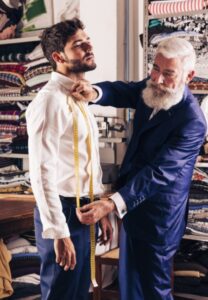
Tailoring trends in the UAE for 2025 reflect a blend of classic elegance, bold experimentation, and technological innovation, driven by the nation’s dynamic fashion scene. These trends shape how tailors approach suit design, fabric selection, and client preferences, ensuring garments remain relevant and stylish.
Classic resurgence is a dominant trend, with tailored suits returning to sharp, structured silhouettes. Single-breasted jackets with notch lapels and slim-fit trousers are popular for business settings, emphasizing clean lines and timeless appeal. Neutral colors like navy, charcoal, and beige dominate, with subtle textures like herringbone or twill adding depth. Tailors focus on details like structured shoulders or double vents to enhance the suit’s sophistication.
Bold colors and patterns are gaining traction, particularly for social events. Vibrant hues like emerald green, burgundy, or royal blue add flair to wedding suits, while patterns like windowpane checks or bold pinstripes make a statement. Tailors experiment with unconventional fabrics, such as velvet for evening jackets or linen blends for summer suits, catering to clients seeking individuality.
Sustainable tailoring continues to grow, with eco-friendly fabrics like organic cotton, recycled wool, and bamboo gaining popularity. Tailors adopt zero-waste practices, using scraps for accessories or linings, and educate clients on sustainable care, such as air-drying suits to reduce energy use. This trend aligns with the UAE’s environmental goals, appealing to eco-conscious consumers.
Technology-driven tailoring is shaping the future. 3D body scanning ensures precise measurements, while AI-driven design tools suggest styles based on client preferences. Smart fabrics with moisture-wicking or stretch properties enhance comfort, particularly for active professionals. Virtual fittings, using augmented reality, allow clients to preview their suit digitally, streamlining the process.
Cultural fusion remains a hallmark, with tailors blending Emirati, South Asian, and Western elements. Hybrid garments, like kandura-inspired blazers or sherwanis with modern cuts, reflect the UAE’s diversity. Tailors also incorporate bold embellishments, such as embroidered cuffs or metallic threads, for cultural attire, appealing to younger clients seeking tradition with a contemporary twist.
These trends, embraced by artisans at Stylish Handy Tailors, ensure that UAE tailoring remains at the forefront of global fashion, offering clients innovative and stylish options for every occasion.
Tailoring for Plus-Size and Non-Standard Body Types
Tailoring for plus-size and non-standard body types in the UAE is a testament to the craft’s inclusivity, ensuring every client enjoys a perfectly fitted suit. Tailors use their expertise to create garments that flatter diverse figures, from plus-size to athletic or asymmetrical builds.
Plus-size tailoring focuses on comfort and confidence. Tailors take extensive measurements to account for larger proportions, ensuring the suit drapes naturally without pulling or bunching. Jackets are crafted with wider shoulders or relaxed waists, while trousers feature adjustable waistbands for ease. Fabrics like lightweight wool or stretch blends provide flexibility, and tailors avoid overly slim cuts that may feel restrictive. Details like bold lapels or vertical stripes elongate the silhouette, enhancing the wearer’s presence.
Athletic builds, common among UAE’s fitness-conscious population, require specialized adjustments. Tailors accommodate broader shoulders, muscular thighs, or defined waists by drafting custom patterns. Drop measurements (the difference between chest and waist) are carefully balanced to avoid a boxy look, with tapered trousers or structured jackets emphasizing the physique. Stretch fabrics or unlined jackets ensure mobility, ideal for active clients.
Non-standard body types, such as those with asymmetrical shoulders or posture variations, benefit from bespoke tailoring’s precision. Tailors adjust patterns to compensate for uneven proportions, using padding or darts to create symmetry. Multiple fittings ensure the suit aligns with the client’s unique shape, with hand-stitched details like floating canvases enhancing comfort. For women, tailored dresses or abayas are customized to flatter curves or unique proportions, with strategic seams or embellishments drawing attention to desired areas.
Inclusivity trends are shaping UAE tailoring, with tailors offering diverse size ranges and styles. They educate clients on fit options, such as relaxed vs. fitted cuts, to suit personal comfort. Fabrics are chosen for their drape, with heavier materials like wool providing structure and lighter ones like linen offering breathability. By prioritizing inclusivity, tailors ensure every client feels confident and stylish, regardless of body type.

Tailoring Events and Fashion Shows in the UAE
Tailoring plays a central role in the UAE’s fashion events and shows, showcasing artisans’ creativity and craftsmanship. These events highlight the industry’s vibrancy, connecting tailors with clients, designers, and global audiences.
Fashion shows in Dubai and Abu Dhabi feature bespoke suits and cultural attire, with tailors collaborating with designers to create runway-worthy garments. Suits with bold patterns or innovative cuts, like asymmetrical jackets, reflect current trends, while kanduras and abayas showcase Emirati heritage with modern twists, such as metallic embroidery or unconventional fabrics. These shows elevate tailors’ visibility, attracting high-profile clients.
Cultural festivals, like the Dubai Shopping Festival or Abu Dhabi’s cultural events, include tailoring exhibitions where artisans demonstrate techniques like hand-stitching or pattern drafting. Clients can commission bespoke garments on-site, fostering direct connections with tailors. These events also highlight sustainable tailoring, with displays of eco-friendly fabrics or zero-waste designs.
Workshops and competitions at fashion events engage aspiring tailors and enthusiasts. Tailors host live demonstrations, teaching techniques like buttonhole stitching or fabric selection, while competitions challenge artisans to create innovative designs under time constraints. These events inspire creativity and showcase the UAE’s tailoring talent.
By participating in these events, tailors contribute to the UAE’s reputation as a global fashion hub, blending tradition and innovation to captivate audiences.
Conclusion
The art of tailoring in the UAE is a vibrant tapestry of tradition, innovation, and cultural diversity, offering endless possibilities for creating garments that elevate style and confidence. From the meticulous process of crafting a bespoke suit to the fusion of Emirati, South Asian, and Western influences, tailoring in the UAE reflects the nation’s dynamic identity. Whether you’re seeking a sharp business suit, a wedding tuxedo, a cultural kandura, or bespoke home furnishings, the UAE’s tailors deliver unparalleled craftsmanship, tailored to your unique needs and the region’s climate.
Ready to experience the transformative power of a tailored suit? Visit Stylish Handy Tailors to start your journey, whether for a bespoke suit, cultural attire, or custom furnishings. Book a consultation to explore your options, discuss your vision, and discover how a perfectly crafted garment can redefine your style in the UAE’s vibrant fashion landscape.
Frequently Asked Questions
1. What is the difference between bespoke and made-to-measure suits?
Answer: Bespoke suits are entirely custom-made from scratch, with a unique pattern created for the client’s measurements, involving multiple fittings (typically 3–5) and hand-stitched details like lapels and buttonholes. This process offers unlimited customization, ideal for weddings or high-profile events, but takes weeks. Made-to-measure suits begin with a pre-existing pattern that is adjusted to the client’s measurements, resulting in fewer fittings (1–2) and often utilizing machine stitching for greater efficiency. They balance personalization and speed, suiting professionals needing business suits quickly. In the UAE, bespoke suits are prized for their exceptional craftsmanship, while made-to-measure options cater to the fast-paced lifestyles of their wearers.
2. How long does it take to get a bespoke suit made?
Answer: Crafting a bespoke suit typically takes 4–8 weeks in the UAE, depending on the tailor’s schedule and the suit’s complexity. The process involves an initial consultation, precise measurements, pattern drafting, hand-cutting, assembly, and multiple fittings to ensure a perfect fit. For urgent needs, some tailors offer express bespoke services, completing suits in 2–3 weeks, though this may involve higher costs or fewer fittings. Made-to-measure suits, by contrast, can be delivered in 1–2 weeks due to streamlined processes.
3. What fabrics are best for suits in hot climates like the UAE?
Answer: In the UAE’s hot climate, lightweight and breathable fabrics are essential for suits. Lightweight wool, such as Merino or tropical wool (8–10 oz), offers both durability and airflow, making it ideal for business or formal suits. Cotton offers a crisp, affordable option for semi-formal occasions, but requires proper care to prevent wrinkling. Linen, with its open weave, is ideal for summer suits, providing a relaxed yet elegant appearance for events such as beach weddings. Tailors in the UAE also recommend silk blends for formal wear and sustainable fabrics, such as organic cotton or bamboo, for eco-conscious clients, ensuring comfort and style in the heat.
4. How much does a bespoke suit cost in the UAE?
The cost of a bespoke suit in the UAE varies depending on factors such as fabric, customization, and the tailor’s expertise. While specific prices depend on the tailor, bespoke suits are generally the most expensive due to hand-stitched details and multiple fittings. Premium fabrics, such as Merino wool or silk, increase costs, while cotton or linen blends are more affordable. Additional customizations, such as monogramming or unique lapels, and express delivery, can add to the expense. Clients are advised to discuss budgets during consultations to strike a balance between quality and affordability.
5. What should I consider when choosing a tailor for a suit?
Answer: When selecting a tailor for a suit in the UAE, consider their expertise, services, and customization options. Look for artisans experienced in bespoke or made-to-measure suits, with training from global hubs like Savile Row or local expertise in traditional attire, such as kanduras. Evaluate their services, such as home consultations, virtual fittings, or express delivery, to suit your schedule and needs. Ensure they offer a range of fabrics and details like linings or buttons to match your style. Check reviews for reliability and ask about fitting schedules, fabric recommendations, and post-delivery alterations to ensure a tailored experience.
6. Can a tailor alter an off-the-rack suit to fit perfectly?
Answer: Yes, a skilled tailor can significantly improve the fit of an off-the-rack suit through alterations, though results depend on the suit’s original construction and the client’s body type. Common alterations include hemming trousers, shortening sleeves, tapering the jacket for a slimmer silhouette, or adjusting the waist. However, major changes, like altering shoulder width or jacket length, may be limited due to the suit’s pre-made structure. In the UAE, tailors often provide express alteration services, ensuring off-the-rack suits look polished for events, though they may not match the precision of bespoke or made-to-measure suits.
7. What is the process for getting a suit tailored?
Answer: The tailoring process for a suit, particularly bespoke, involves several steps. It begins with a consultation to discuss the suit’s purpose (e.g., business or wedding) and style preferences (e.g., lapel type, fit). The tailor takes detailed measurements, noting nuances like posture or asymmetry. Clients select fabrics, such as lightweight wool or linen, as well as details like linings and buttons. The tailor drafts a custom pattern, hand-cuts the fabric, and assembles the suit using techniques such as hand-stitched lapels. Multiple fittings refine the fit, adjusting elements like sleeve length or trouser break. The suit is delivered with care instructions, typically taking 4–8 weeks for bespoke or 1–2 weeks for made-to-measure.
8. How do I know if a suit fits properly?
Answer: A properly fitted suit should feel comfortable and enhance your silhouette. Key indicators include: the jacket shoulders aligning with your natural shoulders without overhang or tightness; a snug but not restrictive chest, allowing you to button the jacket comfortably; sleeves ending at the wrist bone, showing about half an inch of shirt cuff; and trousers with a clean break (slight fold) at the shoe. The jacket should drape smoothly without pulling, and the collar should sit flush against the shirt. In the UAE, tailors ensure suits are tailored to the client’s body, with multiple fittings for bespoke options to perfect the fit.
9. What are the latest trends in suits for 2025?
Answer: In 2025, UAE tailoring trends blend classic elegance with bold innovation. Single-breasted suits with structured silhouettes, available in navy or charcoal, dominate business settings. Bold colors like burgundy or emerald green and patterns like windowpane checks or pinstripes are popular for social events. Sustainable fabrics, such as recycled wool or organic cotton, reflect eco-conscious trends. Technology, like 3D body scanning and smart fabrics with moisture-wicking properties, enhances fit and comfort. Cultural fusion, such as kandura-inspired blazers or modern sherwanis, showcases the UAE’s diversity, keeping suits stylish and innovative.
10. How do tailors accommodate plus-size or non-standard body types?
Answer: Tailors in the UAE excel at crafting suits for plus-size or non-standard body types, ensuring inclusivity. They create custom patterns to accommodate broader shoulders, larger waists, or asymmetrical builds, using extensive measurements to ensure a flattering fit. Fabrics such as lightweight wool with stretch or linen offer comfort and flexibility. Strategic details, such as vertical stripes or bold lapels, elongate the silhouette for plus-size clients, while padding or darts correct asymmetry. Multiple fittings ensure precision, delivering suits that enhance confidence for a diverse range of figures.
11. Can tailors create cultural attire like kanduras or sherwanis?
Answer: Yes, UAE tailors are highly skilled in crafting cultural attire, reflecting the nation’s multicultural identity. Kanduras, tailored from lightweight cotton or linen, feature embroidered collars or cuffs for elegance and breathability. Sherwanis, popular among South Asian clients, are crafted from silk or brocade with intricate zari work or gold buttons, ideal for weddings. Tailors blend traditional craftsmanship with modern cuts, ensuring these garments suit cultural events while aligning with contemporary aesthetics, catering to the UAE’s diverse population.
12. What role does technology play in modern tailoring?
Answer: Technology is transforming suits and tailoring in the UAE, enhancing precision and client experience. Digital consultations via video calls allow remote design discussions, while 3D body scanning captures precise measurements, eliminating errors. Computer-aided design (CAD) software streamlines pattern drafting and cutting, reducing fabric waste. Smart fabrics with moisture-wicking or stretch properties improve comfort in the UAE’s heat. Customer relationship management (CRM) systems store client data, making it easier to reorder. These innovations complement traditional craftsmanship, making tailoring more efficient and accessible.
13. How can I maintain and care for my tailored suit?
Answer: Proper care extends a tailored suit’s lifespan. Store suits on sturdy, wide hangers to maintain shape, and use breathable garment bags to protect from dust. Spot clean stains with a damp cloth to avoid harsh dry cleaning, which can damage fabrics. Brush suits after wear to remove dust, and then steam or iron on a low heat setting to remove wrinkles, avoiding direct contact with delicate fabrics like wool. For major cleaning, choose a reputable dry cleaner familiar with bespoke suits. Tailors in the UAE often provide care instructions to ensure the longevity of garments, especially those made from lightweight fabrics well-suited to the climate.
14. Are sustainable fabrics used in suit tailoring?
Answer: Yes, sustainable fabrics are increasingly popular in UAE tailoring, aligning with global eco-conscious trends. Organic cotton, grown without pesticides, and recycled wool, made from repurposed fibers, reduce environmental impact while maintaining quality. Bamboo and hemp, biodegradable and water-efficient, are breathable options for the UAE’s climate. Tailors adopt zero-waste practices, utilizing fabric scraps for accessories like pocket squares, and promote sustainable care, such as spot cleaning, to extend the life of suits. These efforts support the UAE’s environmental goals, delivering stylish, responsible suits.
15. Can tourists get suits tailored quickly in the UAE?
Answer: Yes, tourists in the UAE can access express tailoring services, delivering made-to-measure suits in as little as 1–2 weeks. Tailors in tourist hubs like Dubai Marina or downtown Abu Dhabi offer hotel consultations, taking measurements, and discussing designs on-site. Lightweight fabrics like cotton or linen ensure comfort for visitors, while cultural attire like kanduras can be crafted for events. International shipping allows delivery to the client’s home country, and express alterations refine existing garments, catering to tourists’ tight schedules in the UAE’s vibrant tourism scene.

